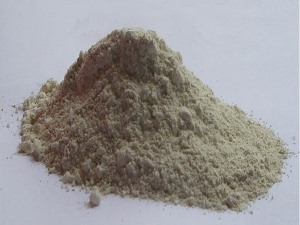- 23
- Oct
The service life of the ramming material of the intermediate frequency furnace
The service life of the ramming material of the intermediate frequency furnace
Intermediate frequency furnace ramming material is a semi-dry, bulk refractory material formed by ramming. Usually particles and fine powders made of high-alumina materials are made according to a certain gradation and added with an appropriate amount of bonding agent. During construction, strong ramming is required to achieve a fine structure. The ramming material of the intermediate frequency furnace is mainly used in the direct contact with the melt. Therefore, the granular and powdered materials are required to have high volume stability, fineness and corrosion resistance. At the same time, the ramming material of the intermediate frequency furnace has good chemical stability and resistance. Erosion, wear resistance, shedding resistance, heat shock resistance.
Intermediate frequency furnace ramming material Now speaking, what kind of lining material is used in the intermediate frequency furnace for smelting copper? Here is a brief explanation for everyone: the lining material used in the current copper smelting intermediate frequency furnace on the market is generally silicon intermediate frequency furnace ramming material.
Because the copper smelting temperature is relatively low, most of the silicon ramming materials are used. In addition to traditional crushing, screening, and magnetic separation processes, this ramming material also needs to be dried and washed. The silicon content of copper smelting silicon ramming material is generally above 95. The iron oxide is less than 0.5. The aluminum oxide is less than 0.7. The refractoriness is generally 1650 degrees. This product is made of special high-grade bauxite clinker and powder.
As the primary raw material, it is a mixture of pure aluminate cement binder, aluminum powder, kyanite, anti-shrinking agent, explosion-proof fiber and other admixture materials. It can be cast into an integral lining by using castables. , Can also be poured into precast blocks for masonry use.
What are the characteristics of high-strength anti-aluminum infiltration castables? With regard to refractory plastics and ramming materials. Domestic laboratories often use manual ramming methods, or pressure testing machines for molding. Germany chooses an automatic tamping machine, tamping with an air hammer, moving the mold back and forth at a uniform speed, and tamping in layers.
The plasticity index is extended with the storage time of the material, the water loss in the material, and the absorption of water by other components. And other physical and chemical changes. This change is aggravated with changes in environmental temperature and humidity.

